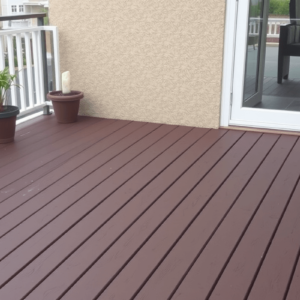Is Composite Fencing Any Good?
Composite fencing has been gaining popularity in recent years due to its unique blend of durability, aesthetics, and low-maintenance properties. This article delves into the pros and cons of composite fencing, examining its longevity, maintenance requirements, visual appeal, and environmental impact. We’ll also compare it with other popular fencing materials like wood, vinyl, and metal.
The Pros of Composite Fencing
Composite fencing offers several advantages over traditional fencing materials. One of its most significant benefits is its longevity. Unlike wood, which can rot or warp over time, composite fencing is made from a combination of recycled wood fibers and plastic, making it resistant to moisture, insects, and UV damage. This means that composite fences can last for decades with minimal upkeep, providing a cost-effective solution in the long run (Source: Family Handyman).
Maintenance Requirements
Composite fencing requires less maintenance than wood, as it does not need painting or staining to protect against the elements. However, it still requires some care to maintain its appearance. Regular cleaning with mild soap and water can help remove dirt and prevent stains. Additionally, it’s important to avoid harsh chemicals, abrasive scrubbers, or power washers, as these can damage the surface of the fence (Source: Hunker).
Visual Appeal
Composite fencing offers a wide range of design options, allowing homeowners to choose from various styles, colors, and textures. Its natural wood-like appearance makes it an attractive alternative to wood, while its resistance to warping, cracking, and fading ensures that it retains its beauty for many years. Moreover, composite fencing can be customized to match the architectural style of your home, making it a versatile option for both modern and traditional settings (Source: Lowe’s).
Environmental Impact
Composite fencing is often touted as an eco-friendly option due to its use of recycled materials. By incorporating recycled wood fibers and plastic, composite fencing helps reduce waste and conserve natural resources. Additionally, its long lifespan means that it will not need to be replaced as frequently as other materials, further reducing its environmental footprint. However, it’s worth noting that the production process of composite fencing can still have an impact on the environment, and proper disposal at the end of its life cycle is crucial to minimize this impact (Source: Green Building Advisor).
Comparison with Other Materials
When compared to other popular fencing materials, composite fencing stands out for its balance of durability, aesthetics, and maintenance requirements. Wood fences are beautiful but require regular maintenance to prevent rotting and insect infestation. Vinyl fences are low-maintenance and resistant to weathering but lack the natural look of wood or composite materials. Metal fences are strong and durable but can rust and require frequent touch-ups. Composite fencing combines the best of these materials, offering a low-maintenance, aesthetically pleasing, and environmentally friendly option (Source: Family Handyman).
Conclusion
In conclusion, composite fencing is a great choice for those looking for a durable, low-maintenance, and visually appealing option. While it may come with a higher initial cost than some other materials, its longevity and minimal upkeep requirements make it a worthwhile investment. When choosing a fencing material, it’s essential to consider your specific needs, budget, and aesthetic preferences. Composite fencing offers a compelling solution that balances these factors effectively.
Reference
How Long Does Fence Last? | Family Handyman
How to Clean Composite Fencing | Hunker
How to Install Composite Fencing 101 | Lowe’s
What Are the Benefits of Composite Fencing? | Green Building Advisor
Fence Materials: Which Is Best for You? | Family Handyman





Reviews
There are no reviews yet.